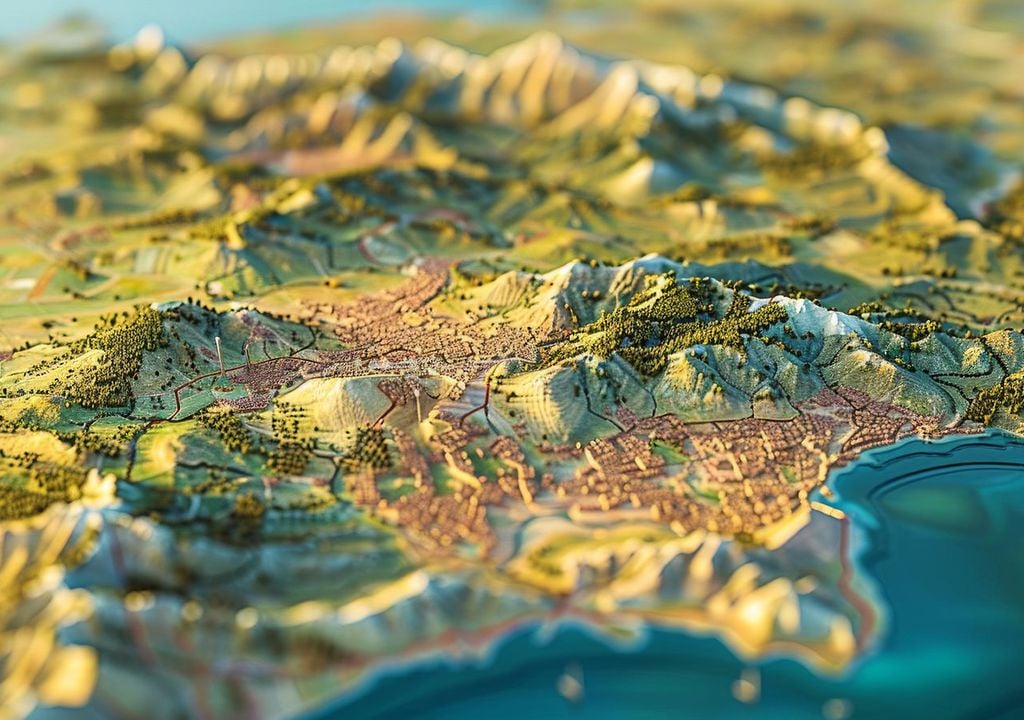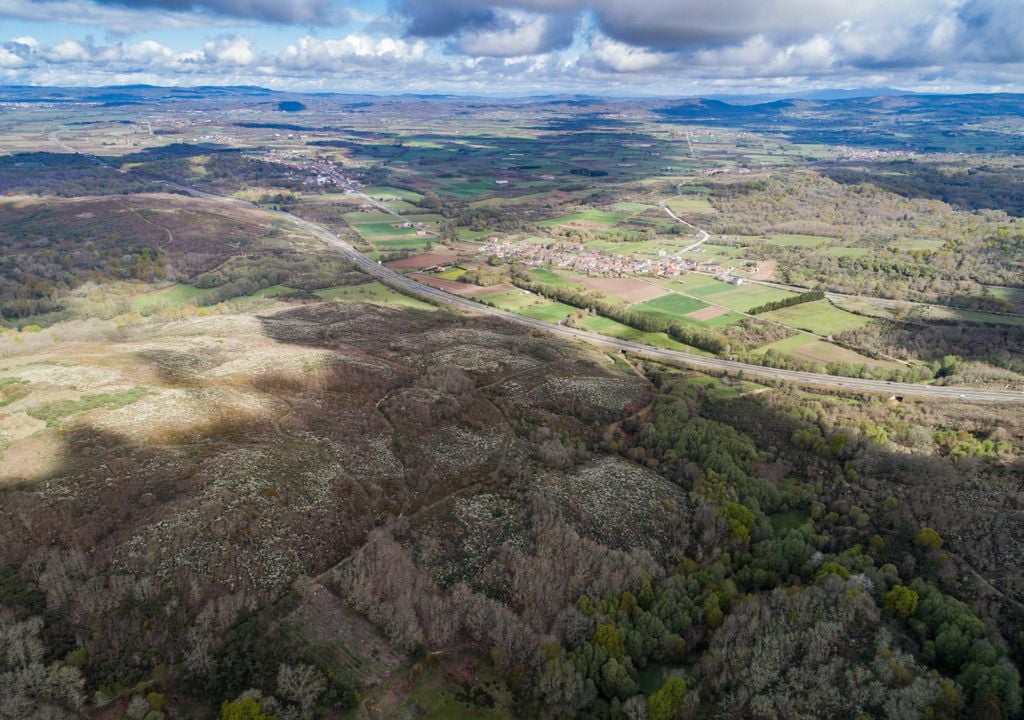Do You Know the Country that Existed Between Spain and Portugal for More Than Seven Centuries?
It has gone unnoticed in history, despite the fact that, in many ways, its inhabitants were ahead of their time. We tell you the fascinating history of this enclave and its Camino Privilexiado, an ancient route for smugglers and criminals.

Trivia Question: Which states maintained territories in the Iberian Peninsula between the 10th and 19th centuries?
Most of our readers would be able to quickly identify four of those five countries: Spain, Portugal, Andorra and the United Kingdom, owner of Gibraltar since July 13, 1713, when the Treaty of Utrecht was signed. But what is the fifth and how did it manage to remain an independent microstate for more than 700 years, in border land and with just over a thousand inhabitants? This is the unique and unknown history of Coto Mixto (in Galician, Couto Mixto, and in Portuguese, Couto Misto).

A micro-republic between two kingdoms
We have to go back to the 10th century, in the Late Middle Ages, to understand the origins of this 26.9 km² enclave located north of the Larouco mountain range, in the current Spanish province of Orense, Galicia, and crossed by the basin of the Salas River.
The Mixed Reserve encompassed the municipalities of Santiago de Rubiás (now belonging to Calvos de Randín) and Meaus (today in Baltar), both currently Galician. Also a small unpopulated strip of what is now part of the Portuguese town of Montalegre. The origin of these towns is linked to the castle of A Picoña. Currently, only the bases and cistern remain of what was once an important defensive fort strategically located in border territory.
️Sobre este promontorio rocoso se situaba el castillo medieval de A Picoña (Calvos de Randin)
Vía Lethes (@ViaLethes) April 6, 2022
Coutomixtour#ALimia #Ourense #Galicia pic.twitter.com/RylayFc3Aw
In the context of complex relations between the feudal lords and with the independence of the Kingdom of Portugal (year 1139) from that of León as the main object of confrontation, Couto Mixto, especially isolated, managed to maintain its autonomy. Also create a system of social organisation and government certainly ahead of its time and more typical of democracy.
Government, organisation and privileges
While in medieval Europe power was in the hands of feudal monarchies, Couto Mixto was established as a republic whose political system was based on three mayors ("home de agreed") democratically elected by each of the three towns. They managed local affairs and resolved disputes between neighbours without the need for outside interference.
The presidency of the Government and highest authority fell to a judge ('xuiz') who was also voted for by the residents themselves in elections that were held every three winters.
¿Sabías que... ?
Bellum Punicum (@BPunicum) February 3, 2023
En la alta Edad Media se creó un microestado entre lo que hoy en día es Portugal y España en la provincia de Orense.Comprendía 3 poblaciones(más o menos 1.000 habitantes).Este fue el caso de Coto Mixto. pic.twitter.com/Ce2uISCR8k
The church of Santiago de Rubiás was the seat of Parliament and also the place where the treasury and official documents of the nation were stored within a chest with three keys (one for each mayor). In terms of social organisation, relations between its citizens were based on equality and cooperation, which was necessary to survive in such an isolated region.
The language used by its inhabitants was Galician. Among the most striking rights and privileges was that of asylum, which was taken advantage of by those fleeing from Spanish and Portuguese justice, so the territory was a shelter for criminals who could choose, as it suited them, Spanish or Portuguese nationality.
In Coto Mixto there was no military service either (they did not contribute soldiers to any cause) and its inhabitants could carry weapons. Other privileges were the exemption from taxes, the freedom to grow crops such as tobacco or the freedom to trade products such as salt, which then could only be bought and sold in tobacconists.
Haven for criminals and smugglers
In order to enjoy this commercial freedom, the so-called Privilexied Road was used, which crossed the territory of Couto Misto and connected Rubiás with the Portuguese municipality of Tourém, and was used for the transit of people and goods. Its status as a neutral route gave it special status, so the road was also exempt from certain regulations and tariffs that applied on other trade routes.
Canellas do #CamiñoPrivilexiado
— Couto Mixto (@CoutoMixto) September 13, 2015
En tiempos, en este camino se permitía el #librecomercio de esta pequeña República. pic.twitter.com/rW0upaqNSI
Therefore, it was used by those who wanted to avoid the taxes and restrictions that applied on other routes. Thus it also constituted a guarantee for smugglers. Neither the Spanish nor the Portuguese authorities could arrest its users. After the disappearance of the privileges of the Coto Mixto, the Camino Privilexiado also served during the Franco dictatorship so that Republican exiles could escape to the other side of the line.
The end of the story
In 1864, Spain and Portugal signed the Treaty of Lisbon, which definitively established the borders that both countries maintain today. It was the end of the only example of local self-government in the history of the Iberian Peninsula. After the dispute over the territory of the Coto Mixto, Portugal finally ceded it to Spain in exchange for sovereignty over the so-called "promiscuous peoples."
It was a territory formed by the towns of Cambedo (in the current parish of Vilarelho da Raia), Soutelinho da Raia and Lama de Arcos, and which were in a similar situation.
Estatua de Delfín Modesto Brandón, un dos derradeiros xuíces do #CoutoMixto (#SantiagodeRubiás #CalvosdeRandín #ALimia #Ourense #RBTGX) @Couto_Mixto @apatrigal @historiaGAL pic.twitter.com/JqWdSwQoxW
— Portas do Xurés (@portasdoxures) March 24, 2022
In Coto Mixto, the inhabitants who wanted to retain Portuguese nationality were able to do so, after notifying the authorities under Article XXVII of the Treaty. With the passage of time, the Privilexiado Road lost its relevance and ceased to exist as a commercial route. All that remains of the small republic is a bronze statue erected in 2008 in Calvos de Randín in memory of Delfín Modesto Brandón, the last judge who governed the tiny nation until 1864.








